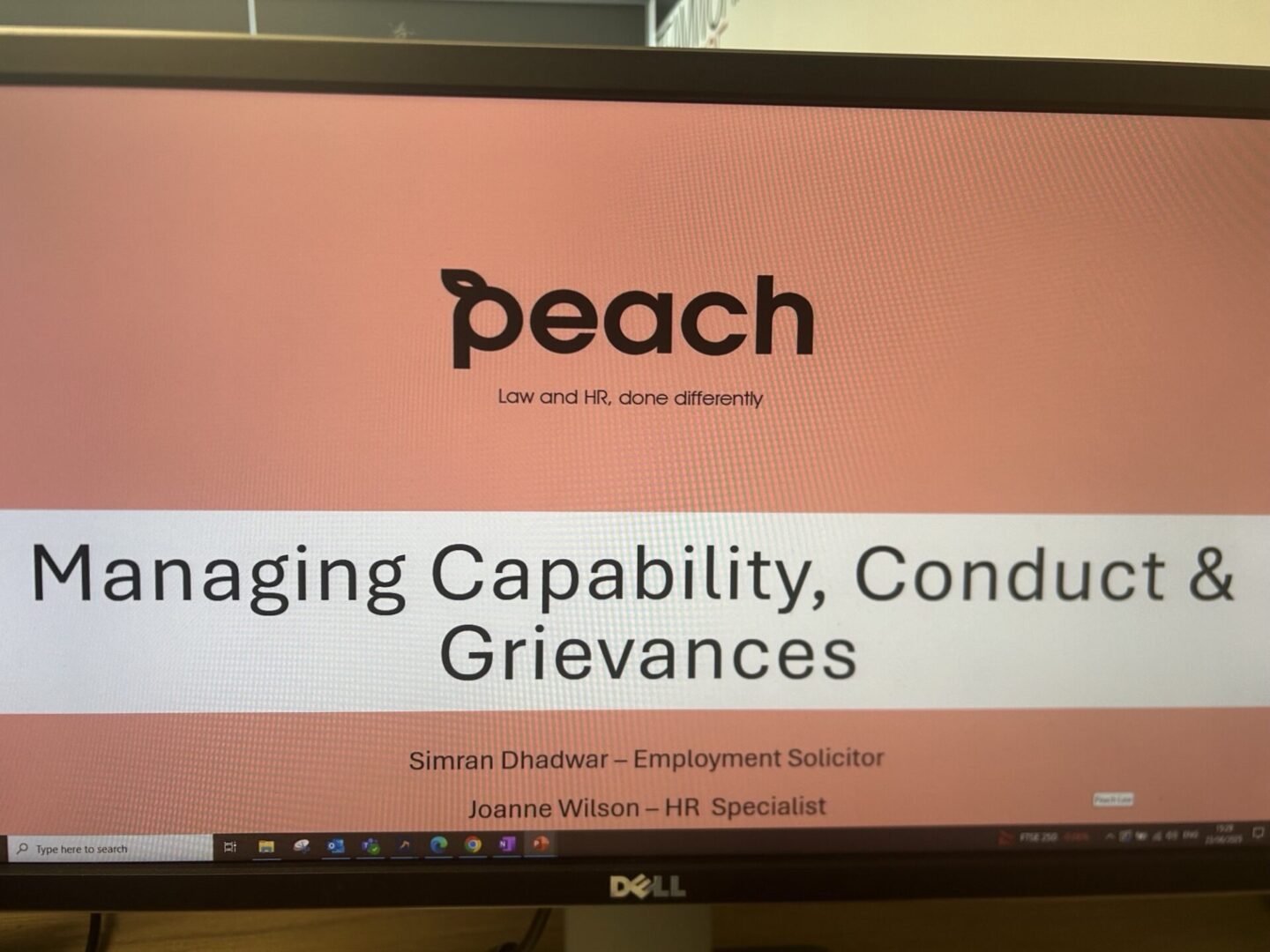What is redundancy?
Redundancy occurs when you either have a reduced need for work of a particular kind, or work at a particular location, and therefore make the business decision to dismiss employees in order to reduce the size of the workforce. Redundancy usually falls within one of the following categories:
- Business closure (closure of the business altogether).
- Workplace closure (closure of one of several sites, or relocation to a new site).
- Diminishing need for employees to do work of a particular kind. (we would discuss work of a particular kind with you, and what that means, to establish whether this is the case)
You may decide to make redundancies for a variety of reasons, including:
- Recession or other economic pressures making business closure or reduction in staff numbers necessary.
- Changes in the nature of products or services provided.
- Internal reorganisation to make more efficient use of roles and duties.
- Technological developments resulting in change to some or all job functions.
- Relocation of business.
It is worth noting that an Employment Tribunal will not interfere with your freedom to make such business decisions, and you are not required to justify your reason for making redundancies to an Employment Tribunal. As long as a Tribunal is satisfied that redundancy is the genuine reason for a dismissal, it will not look behind the facts of the matter to see how the redundancy situation arose.
Do you have to follow any process?
Yes, it is vital to ensure that you avoid any claims including unfair dismissal. You must be able to show the following:
- There is a genuine need for redundancies within your business.
- You have identified the correct pool of employees for the redundancy selection process.
- You used fair and transparent selection criteria in choosing employees for redundancy.
- You undertook meaningful consultation including complying with your additional duties of collective consultation if you are making more than 20 employees redundant over a period of 90 days or less.
- The employees selected for redundancy receive their full statutory and/or contractual redundancy pay (subject to length of service, which we can discuss with you).
You also need to consider the following:
- Planning;
- Voluntary redundancies;
- Selection Pools;
- Selection Criteria;
- Consultation;
- Possible alternative Employment (including suitable alternative employment);
- Trial Periods; and
- The appeal process.
You should discuss your situation with a qualified employment lawyer and undertake a risk analysis before commencing any redundancy procedure. A qualified employment lawyer can work with you to establish a plan, bearing in mind the law and your business objectives. Failure to seek legal advice can be extremely costly in the long run.
An employee who has 2 years’ service (or less if they fall within one of the exceptions) is entitled not to be unfairly dismissed. Redundancy is a potential fair reason for dismissal but even if a dismissal is genuinely on grounds of redundancy, whether it is fair or not normally depends on whether the business acted reasonably in all the circumstances. A redundancy dismissal is likely to be unfair unless the employer can show it adhered to the points mentioned above.
Further, failure to follow the correct collective consultation procedure (as set out below) can result in a “protective award” being given of up to 90 days’ gross pay for each affected employee, which can add up to a substantial amount (these awards add up and therefore can be among the most significant financial awards an employment tribunal can make against a business).
It is important to note that, unlike with redundancy payments and unfair dismissal claims (save a few exceptions), your employees do not need to have been employed for two years to make a claim for a protective award.
How does consultation work?
It is crucial to consult with your employees in order to discuss the business’ proposals and to discuss any ways in which redundancies could be avoided or reduced. The business must collectively consult (if 20 or more employees are to be made redundant over a period of 90 days or less) or consult individually (if less than 20 employees are affected). Consultation should be meaningful, and you need to be able to show that you have genuinely considered any suggestions, or any points raised by each employee, even if you do not agree with them.
There is no set time limit for how long the consultation period should last, but the minimum duration is:
- Less than 20 redundancies: individual consultation only. There are no rules for how long individual consultation should last, but you should check whether you have a policy or agreement in place detailing any procedure you should follow as a business, for example in your Staff Handbook.
- 20 – 99 redundancies: the consultation has to start at least 30 days before any dismissals happen.
- 100 or more redundancies: the consultation has to start at least 45 days before any dismissals happen.
Where 20 or more employees are being made redundant, you must notify the Government using form HR1.
Do you have to pay all employees a redundancy payment?
You need to check each employee’s contract of employment, to determine whether there are any contractual redundancy payments an employee is entitled to.
With regards to statutory redundancy pay (SRP), employees require at least 2 years’ service to qualify for that payment. The same qualifying period is attached to any claim for unfair dismissal (save a few exceptions).
You also need to check the employee’s individual contract of employment to see what notice you need to give them, ahead of the redundancy dismissal. Note – contractual notice is different to statutory redundancy pay (SPR) as aforementioned. You will also need to pay the employee any accrued but untaken annual leave.
What are the main risks?
The main claims that employees may bring upon termination following redundancy are:
- unfair dismissal;
- discrimination (age, disability, gender reassignment, marriage and civil partnership, pregnancy and maternity, race, religion or belief, sex, sexual orientation);
- protective award;
- failure to make a redundancy payment; and
- breach of contract.
It is essential that you follow a fair process and that dismissals by way of redundancy are only made where there is a genuine redundancy situation. There are further factors to take into account where an employee placed in a pool is on maternity leave or on long-term sick, the process will need adapting to ensure you are legally compliant and not open to greater risk.
Do you need some advice on your next steps?
Are you considering redundancies and/or a restructure?
Do you know what you need to do?
Please call us confidentially on 0161 478 3800 or email hello@peachlaw.co.uk and one of our specialists can help you.


